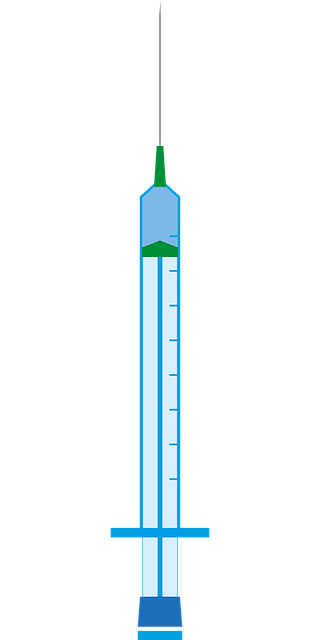Ozone treatment, an effective natural process, is revitalizing Lake Oswego, Oregon's water quality. By generating ozone gas and diffusing it into the lake, local authorities combat pollutants, bacteria, and organic compounds, reducing nutrient levels and harmful algal blooms. This approach aims to restore the lake's ecological balance, enhancing its health for residents and visitors. The successful implementation of advanced ozone technology in Lake Oswego demonstrates its transformative power, improving water quality, fostering biodiversity, and ensuring safer swimming conditions through regular treatments as part of the ongoing Ozone Treatment Lake Oswego OR project.
“Discover how Lake Oswego, Oregon, has emerged as a prime example of urban water quality improvement through innovative ozone treatment. This comprehensive article explores the unique journey of this lake, from understanding ozone treatment’s efficacy in purifying water bodies to its profound benefits for local ecosystems. We delve into the case study, revealing the step-by-step process that transformed Lake Oswego. Additionally, we examine community engagement and sustainable future plans, offering valuable insights into this game-changing approach to water management.”
- Understanding Ozone Treatment for Water Bodies
- Lake Oswego OR: A Case Study in Urban Water Quality Improvement
- Benefits of Ozone Therapy for Lakes and Its Ecosystem
- The Process: How Ozone Treatment Works on Lake Oswego
- Community Engagement and Future Sustainability Plans for Lake Oswego's Ozone Treatment
Understanding Ozone Treatment for Water Bodies

Ozone treatment is a powerful and effective method for purifying water bodies, making it an appealing solution for Lake Oswego, OR. This natural process involves introducing ozone (O3) into the water, which acts as a potent oxidizer, breaking down pollutants, bacteria, and other harmful substances. By utilizing this technology, local authorities aim to address various water quality issues plaguing the lake.
The process starts with generating ozone gas through specialized equipment, which is then diffused into the water body. Ozone molecules aggressively react with organic compounds, pesticides, and industrial waste, rendering them harmless. This treatment is particularly beneficial for lakes suffering from algae blooms, as it can significantly reduce nutrient levels and prevent harmful algal species from thriving. In Lake Oswego, this approach promises to restore the lake’s ecological balance and enhance its overall health, ensuring a cleaner and safer environment for both residents and visitors.
Lake Oswego OR: A Case Study in Urban Water Quality Improvement

Lake Oswego, Oregon, serves as an excellent case study for urban water quality improvement through ozone treatment. The city’s initiative to address water pollution issues has resulted in notable success stories. By implementing advanced ozone treatment technology, local authorities have been able to significantly reduce harmful contaminants and improve overall water quality.
This innovative approach involves the use of ozone gas, a powerful oxidizer, to break down organic compounds and pollutants present in the lake. The process effectively targets bacteria, algae blooms, and other waterborne pathogens, ensuring safer swimming conditions and a healthier ecosystem. Through regular ozone treatment sessions, Lake Oswego has witnessed a decline in harmful nutrient levels, leading to a more balanced and sustainable aquatic environment.
Benefits of Ozone Therapy for Lakes and Its Ecosystem

Ozone therapy is a game-changer when it comes to lake restoration and conservation, particularly in scenic Lake Oswego, Oregon. This innovative treatment offers a multitude of advantages for aquatic ecosystems. By introducing ozone (O3) into the water, the process effectively breaks down pollutants and harmful substances. It targets and eliminates contaminants such as algae blooms, pesticides, and other organic compounds that can degrade water quality. As a result, it not only improves the physical and chemical conditions of the lake but also fosters a healthier environment for its inhabitants.
The benefits extend to the entire ecosystem, promoting biodiversity and ecological balance. Ozone treatment can reduce harmful bacteria levels, ensuring safer water for aquatic life and human recreation. It also stimulates the growth of beneficial microorganisms, contributing to a more stable and resilient lake ecosystem. This natural process is an eco-friendly alternative to traditional chemical treatments, making it a preferred choice for Lake Oswego’s conservation efforts, where maintaining the lake’s pristine condition remains a top priority.
The Process: How Ozone Treatment Works on Lake Oswego

The process of ozone treatment for Lake Oswego involves a sophisticated approach to water purification. Ozone (O3), a powerful oxidizer, is introduced into the lake water, where it reacts with organic pollutants and harmful microorganisms. This reaction breaks down the pollutants, rendering them harmless, and eliminates bacteria and viruses, ensuring cleaner and safer water.
The treatment begins with the generation of ozone gas through an ozone generator. This gas is then carefully infused into the lake’s water body, often through diffusers or aerators strategically placed to ensure even distribution. The ozone effectively targets and neutralizes contaminants, including algae blooms, toxic chemicals, and pathogens, making it a highly effective solution for water quality improvement in Lake Oswego OR.
Community Engagement and Future Sustainability Plans for Lake Oswego's Ozone Treatment

The success of Lake Oswego’s ozone treatment initiative relies heavily on community engagement and support, ensuring that the benefits are felt by all residents. Local stakeholders have actively participated in workshops and meetings, providing valuable insights into the lake’s ecosystem and potential challenges. This collaborative approach has fostered a sense of ownership among the community, encouraging long-term commitment to the project’s sustainability.
Future plans for Lake Oswego’s ozone treatment focus on maintaining and improving water quality while integrating innovative technologies. By leveraging public feedback and scientific research, authorities aim to create a sustainable solution that addresses current issues and prevents future degradation. Regular monitoring and adaptive management strategies will be implemented to ensure the lake remains a vibrant and healthy ecosystem for generations to come.
Lake Oswego, Oregon, serves as a remarkable example of how ozone treatment can transform urban water quality. By implementing this advanced water purification technique, the community has achieved significant improvements in the lake’s ecosystem. The successful case study highlights the numerous benefits of ozone therapy, including enhanced water clarity, reduced pollutants, and revitalized aquatic life. As demonstrated in Lake Oswego, adopting innovative solutions like ozone treatment is crucial for sustaining healthy water bodies, ensuring a brighter future for both urban environments and their surrounding ecosystems.






